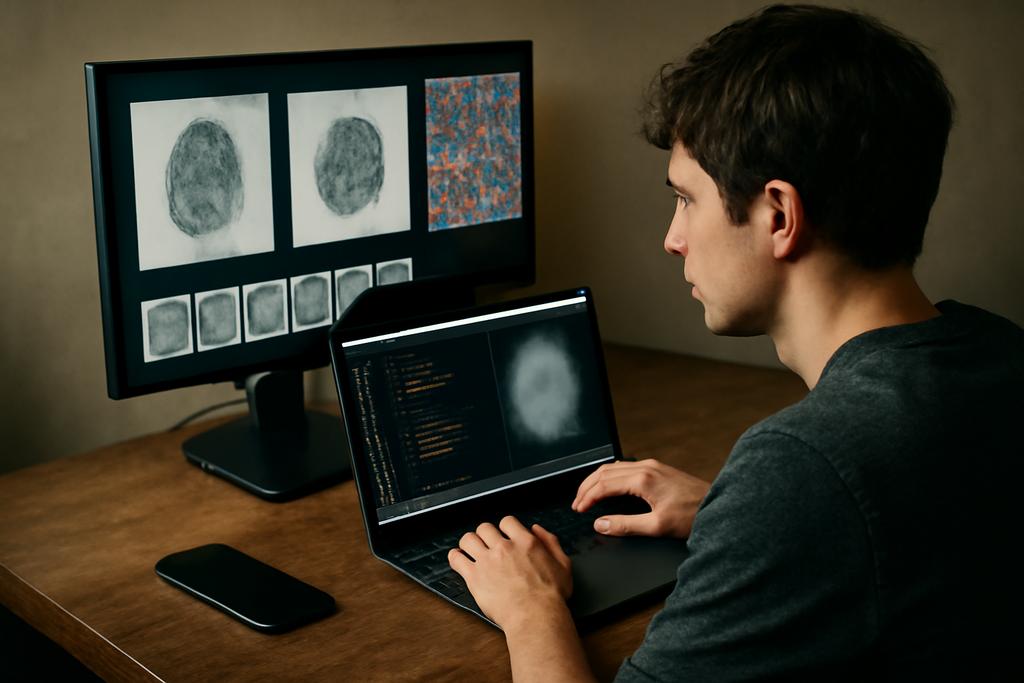The internet age has unleashed a torrent of easily copied multimedia content – videos, music, images – making copyright protection a constant battle. One clever technique used to fight piracy is multimedia fingerprinting: embedding unique identifiers into each copy of a digital work. If a pirated copy shows up, these fingerprints can theoretically trace it back to the guilty party. But what if several pirates collude, averaging their slightly different copies to create a new, harder-to-trace version? This is the averaging attack, a major challenge for digital copyright protection. Researchers at the Key Lab of Education Blockchain and Intelligent Technology, Ministry of Education and Guangxi Key Lab of Multi-Source Information Mining and Security, Guangxi Normal University, have developed novel tracing algorithms to improve the accuracy of tracking down copyright infringers. Lead researcher Jing Jiang and colleagues have devised a way to effectively combat this clever strategy.
The Averaging Attack: A Pirate’s Clever Trick
Imagine a digital watermark, a unique fingerprint hidden within a copyrighted video. This watermark allows copyright holders to track down illicit copies. Now, picture several individuals each possessing a slightly different watermarked version of the same video. If they decide to work together, they could average their copies. This blend reduces the strength of individual watermarks, making it significantly more challenging to pinpoint the source of the pirate copy. The cleverness of this averaging attack is that it makes the pirate copy look almost indistinguishable from the original, while simultaneously making it harder to trace.
Existing methods often focus on creating extremely robust fingerprinting codes—essentially, designing watermarks with special mathematical properties to resist averaging. But the focus on code structure, researchers found, led to inefficiencies. Think of it like building a fortress with walls so thick and strong that the defenders never have to actually fight—the walls are so strong no one can ever hope to breach them. But what if the walls are impossibly expensive to build and difficult to maintain? That’s analogous to the problem faced by existing fingerprinting methods.
A New Approach: Algorithms First, then Codes
The Guangxi Normal University researchers turned the usual approach on its head. Instead of optimizing complex fingerprinting codes first, they prioritized the design of sophisticated tracing algorithms. This innovative approach allowed them to create algorithms capable of efficiently identifying pirates even when their watermarks had been cleverly diluted through averaging. It’s as if they built the fortress with ordinary walls but developed an incredibly effective defense strategy, enabling their defenders to easily outmaneuver an attack even on less resilient defenses.
They developed two key algorithms: a “soft tracing algorithm” and a “two-stage soft tracing algorithm.” The soft tracing algorithm tackles the averaging attack directly, improving the detection rate of colluders. The two-stage algorithm builds on this, enhancing the accuracy and efficiency even further by working through the problem in two distinct phases. These algorithms are designed to work with specific types of “anti-averaging-collusion codes,” which are basically sets of watermarks with carefully chosen properties, optimized to work best with these new algorithms. This is a synergistic pairing: the algorithm is only as good as its code, and vice versa.
The Power of SMIPPCs and Concatenated Codes
The researchers found that a type of code called “Strongly Multimedia Identifiable Parent Property Codes” (SMIPPCs) performed particularly well with their algorithms. SMIPPCs have a weaker combinatorial structure than existing codes, allowing for higher code rates—meaning more unique watermarks can be created without sacrificing traceability. These codes can identify at least one colluder using traditional methods, but the researchers’ new algorithms can trace all of them.
To further boost efficiency, the team also explored “concatenated codes.” These are created by combining two different types of SMIPPCs. This approach combines the strengths of both codes, producing fingerprints even more resistant to averaging attacks, while also maintaining very high code rates, and yielding impressive results. This two-pronged approach proved remarkably effective.
Implications and Future Directions
This research has significant implications for multimedia copyright protection. The new algorithms and their associated codes offer a more efficient and accurate way to identify pirates who attempt to evade detection through collusion. The higher code rates achieved mean that more individual watermarks can be created and distributed, expanding the pool of potential users while maintaining strong protection against pirates. Think of it as strengthening the security of a digital asset while increasing its accessibility.
The researchers’ work opens exciting avenues for future exploration. Further refinements to the algorithms, investigation of novel code structures, and adaptations for different multimedia formats are all promising areas of inquiry. The battle against digital piracy is ongoing; the sophisticated techniques developed by Jiang and her team represent a significant step forward, providing a more effective shield against increasingly cunning forms of attack. The combination of smart algorithms and precisely-designed codes offers a powerful new weapon in the fight to protect digital copyright.










